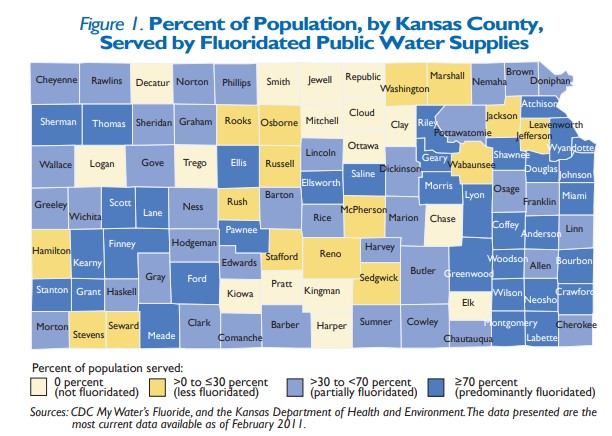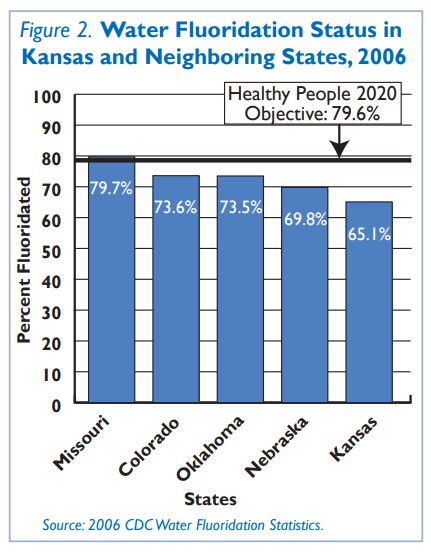Safety Concerns
Drinking water with fluoride concentrations higher than the optimal level can put children age eight and younger at risk for developing fluorosis — a change in the appearance of tooth enamel that results from overexposure to fluoride. Only children in this age group can develop fluorosis since it occurs while permanent teeth are forming.
Mild or moderate fluorosis, characterized by visible white markings on the teeth, can result from drinking water with fluoride levels exceeding 1.5 milligrams per liter. More severe fluorosis, while rare in the United States, is characterized by the staining and pitting of the surface of teeth. Severe fluorosis can result from exposure to water with fluoride concentrations at or exceeding 4 milligrams per liter. Lifetime exposure to water with fluoride concentrations of this amount can weaken bones and increase the risk for bone fractures. The U.S. Environmental Protection Agency determines the maximum level of fluoride allowed in drinking water, which is currently set at 4 milligrams per liter. The agency is considering whether to lower the limit. As for additional safety concerns, there is currently no strong evidence associating water fluoridation with cancer or other serious illnesses.
Effectiveness
Although the majority of research continues to support the effectiveness of community water fluoridation in preventing cavities, the extent of its benefits is hard to determine due to the increased use of other products containing fluoride.
Cost-Effectiveness
At an average cost of 50 cents per person, per year, community water fluoridation is more cost effective than any other means of preventing cavities. Fluoride toothpaste, for example, has an average cost of $10 to $73 per person, per year. Every $1 spent on water fluoridation saves an estimated $38 in cavity treatment costs. Community water fluoridation in Colorado is credited with saving an estimated $149.9 million in direct medical and indirect nonmedical expenditures in 2003.
Improving Dental Health in Kansas
Many Kansas residents experience dental problems that are preventable. For instance, among Kansas K–12 students screened during the 2009–2010 school year, about one-quarter had untreated cavities and one-fifth required restorative dental care. State and local policymakers should consider how certain dental programs and practices, such as fluoridation, can be used to improve dental health in our state. While the debate surrounding community water fluoridation continues, the scientific evidence, at this time, supports the safety, dental health benefits and cost-effectiveness of fluoridation.
Funding for this project was provided by the Kansas Health Foundation, a philanthropic organization whose mission is to improve the health of all Kansans. This publication is based on work done by Tatiana Y. Lin, M.A., and Barbara J. LaClair, M.H.A. Other contributions were made by Anne Berry, Caitlin McMurtry, Cathy McNorton, Jim McLean and Robert F. St. Peter, M.D.


